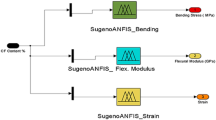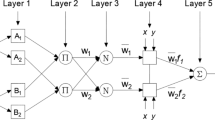Abstract
The field of composites mechanics, engineering and technology is relatively young, and the test methods and measurements techniques are not yet fully developed. The modeling of their mechanical properties is even further behind the experimental investigations. The study and application of composite materials is a truly interdisciplinary endeavor that has been enriched by contributions from chemistry, physics, material science and manufacturing engineering. Since numerous possibilities exist in combining constituents to form a composite there are many factors that can affect the global homogenized mechanical properties of composite materials, their behavior under different boundary and loading conditions, and their final failure. In fiber composites, both the fibers and the matrix retain their original physical and chemical identities, yet together they produce a combination of mechanical properties that cannot be achieved with either of the constituents acting alone, due to the presence of an interface between these two constituents. Thus, proper characterization of composites, whether it is for chemical, physical or mechanical properties, is extremely difficult because most interfaces are buried inside the material.
Access this chapter
Tax calculation will be finalised at checkout
Purchases are for personal use only
Preview
Unable to display preview. Download preview PDF.
Similar content being viewed by others

References
Taylor N.W. (1947), Mechanism of fracture of glass and similar brittle solids, J. Appl. Physics, 18, pp. 943–954.
Stuart D.A. and Anderson O.L. (1952), Dependence of ultimate strength of glass under constant load and temperature, ambient atmosphere, and time, J. Amer. Ceram. Soc., 36, pp. 416–424.
Charles R.J. (1958), Static fatigue of glass. I, Journal of Applied Physics, 29, pp. 1549–1553.
Charles R.J. (1958), Static fatigue of glass. II, Journal of Applied Physics, 29, pp. 1554–1560.
Mould R.E. and Southwick R.D. (1959), Strength and static fatigue of abraded glass under controlled ambient conditions, J. Amer. Ceram. Soc., 42, Part I, pp. 542–581, Part II, pp. 582–607.
Charles R.J. and Hillig W.B. (1961), The kinetics of glass failure by stress corrosion, published as part of the Symposium on the Mechanical Strength of Glass and Ways of Improving It, Union Scientifique Continentale du Verre.
Kies J.A. (1964), The strength of glass fibers and the failure of filament wound pressure vessels, NRL Report 6034, U. S. Naval Research Laboratory.
Schmitz G.K. and Metcalfe A.G. (1965), Characterization of flaws on glass fibers, Proc. 20th Anniversary Technical Conference, The Society of the Plastics Industry.
Schmitz G.K. and Metcalfe A.G. (1966), Stress-corrosion of E-glass fibers, I&EC Product Res. & Dev., 5, pp. 1–6.
Elishakoff I. (1983), Probabilistic methods in the theory of structures, John Wiley & Sons, New York.
Rao S.S. and Sawyer P. (1995), Fuzzy finite element approach for the analysis of imprecisely defined system, AIAA Journal, 33, no. 12, pp. 2364–2370.
Zadeh L.A. (1965), Fuzzy sets, Information and Control, 8, pp. 338–353.
McNeill F.M. and Thro E. (1996), Fuzzy logic: a practical approach, AP Professional, Fuzzy Logic CD-Rom Library, Electrographics Electronic Imaging, East Lansing, Michigan, USA.
Cox E. (1996), The fuzzy systems handbook, AP Professional, Fuzzy Logic CD-Rom Library, Electrographics Electronic Imaging, East Lansing, Michigan, USA.
Tsoukalas L.H. and Uhrig R.E. (1997), Fuzzy and neural approaches in engineering, A Wiley-Interscience Publication: John Wiley and Sons, New York, USA.
Dubois and Prade (1996), Fuzzy sets and system: theory and applications, AP Professional, Fuzzy Logic CD-Rom Library, Electrographics Electronic Imaging, East Lansing, Michigan, USA.
Zadeh L.A. (1996), Fuzzy sets and their application to cognitive and decision process, AP Professional, Fuzzy Logic CD-Rom Library, Electrographics Electronic Imaging, East Lansing, Michigan, USA.
Kosko B. (1991), Neural networks and fuzzy systems, Prentice Hall, Englewood Cliffs, NJ.
CD-ROM (1996), AP Professional, Fuzzy Logic CD-Rom Library, Electrographics Electronic Imaging, East Lansing, Michigan, USA.
Mathematica® (1995), Fuzzy logic pack, Wolfram Research, Inc., Champaign, Illinois.
Lallemand B., Plessis G., Tison T., and Level P. (1999), Neumann expansion for fuzzy finite element analysis, Engineering Computations, pp. 572–583.
Skrzypczyk J. and Burczynski T. (1997), The fuzzy boundary element method, Proc. XIII PCCMM, Poznan, pp. 1195–1202.
Abdel-Tawab K. and Noor A.K. (1999), A fuzzy-set analysis for a dynamic thermoelasto-viscoplastic damage response, Computer and Structures, 70, pp. 91–107.
Muc A. and Kedziora P. (2001), A fuzzy-set approach to failure analysis of composite structures, Mech. Composite Mat., (in print).
Szeliga E. and Witkowski M. (1999), Fuzzy Monte Carlo Method for the stability assessment, Proc. XIV PCCMM, Rzeszów, pp. 353–354.
Brown C.B. and Yao J.T.P. (1983), Fuzzy sets and structural engineering, ASCE Journal of Structural Engineering, 109, pp. 1211–1225.
Valliappan S. and Pham T.D., Elasto-plastic finite element analysis with fuzzy parameters, International Journal for Numerical Methods in Engineering, 38, pp. 531–548.
Loskiewicz-Buczak A. and Uhrig R.E. (1993), Neural network — fuzzy logic diagnosis system for vibration monitoring, Proceedings of ANNIE-93, Artificial Neural Networks in Engineering Conference, St. Louis, MO.
Kohonen T. (1990), The self-organizing map, Proceedings of the IEEE, 78, no. 9.
Zimmermann H.J. (1976), Description and optimization of fuzzy systems, International Journal of General Systems, 2, no. 4, pp. 209–215.
Verdegay J.L. (1982), Fuzzy mathematical programming, Fuzzy Information and Design Process (Edited by M. M. Gupta and E. Sanchez), North-Holland, Amsterdam.
Yazenin A.V. (1987), Fuzzy and stochastic programming, Fuzzy Sets Syst., 22, pp. 171–180.
Yeh Y.C. and Hsu D.S. (1988), Structural optimization with uncertainty factors, Twelfth National Conference on Theoretical and Applied Mechanics, Taipei, Taiwan, R.O.C., pp. 565–571.
Morton S.K. and Webber J.P.H. (1990), Uncertainty reasoning applied to the assessment of composite materials for structural design, Engineering Optimization, 16, pp. 43–77.
Adali S. (1991), Fuzzy optimization of laminated cylindrical pressure vessels, Composite Structures, Elsevier Applied Science, London, pp. 249–260.
Norwich A.M. and Turksen I.B. (1984), A model for the measurement of membership and consequences of its empirical implementation, Fuzzy Sets and Systems, 12, no. 1, pp. 1–25.
Dombi J. (1993), Membership function as a evaluation, Fuzzy Sets and Systems, 35, no. 1, pp. 1–21.
Dong W. and Shah H.C. (1987), Vertex method for computing functions of fuzzy variables, Fuzzy Sets and Systems, 24, pp. 65–78.
Aboudi J. (1987), Closed form constitutive equations for metal matrix composites, International Journal Engineering Science, 25, no. 9, pp. 1229–1240.
Aboudi, J., (1989), Micromechanical analysis of composites by method of cells , Appl. Mech. Rev., Vol. 42, No 7, pp. 193–221.
Aboudi, J., (1984), Effective behavior of inelastic fiber reinforced composites, International Journal Engineering Science, 22, pp.439–449.
Aboudi, J., (1982), A continuum theory for fiber reinforced elastic-viscoplastic composites, International Journal Engineering Science, 20, pp.605–621.
Byun J.H. and Chou T.W. (1995), Effect of yarn twist on the elastic property of composites, Proceedings of ICCM-10, Whistler, B. C., Canada, 4, pp. 293–299.
Muc A., Rys J., and Latas W. (1993), Limit load carrying capacity for spherical laminated shells under external pressure, Composite Structures, 25, pp. 295–303.
Muc A. and Kedziora P. (2000), A fuzzy set analysis for a fatigue damage response of composite materials, Proceedings of International Conference ICCST/3, Durban, pp. 417–422.
Muc A. and Kedziora P. (2001), A description of infra-laminar cracks with the use of fuzzy sets, Composite Structures, (in print).
Fish J.C. and Lee S.W. (1988), Tensile strength of tapered composite structures, Proceedings of the AIAA/ASME/ASCE/AHS/ASC 29th Structures, Structural Dynamics and Materials Conference, Part I, AIAA Paper 88–2252.
Curry J.M., Johnson E.R., and Starnes J.H. (1992), Effect of dropped plies on the strength of graphite/epoxy laminates, AIAA J., 30, pp. 82–88.
Winsom M.R. (1991), Delamination in tapered unidirectional glass/epoxy under static tension loading, Proceedings of the AIAA/ASME/ASCE/AHS/ ASC 32nd Structures, Structural Dynamics and Materials Conference, Part II, AIAA Paper 91–1142
Salpeker S.A., Raju I.S., and O’Brien T.K. (1988), Strain energy release rate analysis of delamination in tapered laminates subjected to tension loading, Proceedings of the American Society for Composites, 3rd Technical Conference, Technomic Publ.,
Trethewey B.R., Gillespie J.W., and Wilkins D.J. (1990), Interlaminar performance of tapered composite laminates, Proceedings of the American Society for Composites, 5th Technical Conference, Technomic Publ., Lancaster.
Kanninen M.F. and Popelar C.H. (1985), Advanced Fracture Mechanics, Oxford Engineering Science Series 15, Oxford University Press.
Bergmann H.W., Prinz R. (1989), Fatigue life estimation of graphite/epoxy laminates under consideration of delamination growth, Int. J. Num. Meth. Eng., 27, pp. 323–341.
Russel A.J. and Street K.J. (1987), The effect of matrix toughness on delamination static and fatigue fracture under mode II shear loading of graphite composites, Toughened Composites, ASTM STP 937, American Society for Testing and Materials, Philadelphia.
Rao S.S. (1987), Multi-objective optimization of fuzzy structural systems, International Journal for numerical Methods in Engineering, 24, pp. 1157–1171.
Rao S.S. (1992), Fuzzy goal programming approach for structural optimization, AIAA Journal, 30, no. 5, pp. 1425–1432.
Muc A. (1988), Optimal fiber orientations for simply -supported plates under compression, Composite Structures, 9, pp.161–172.
Lee J., Harris B., Almond D.P., and Hammett F. (1997), Fiber composites fatigue-life determination, Composites: Part A, 28A, pp. 5–15.
Author information
Authors and Affiliations
Editor information
Editors and Affiliations
Rights and permissions
Copyright information
© 2003 Springer-Verlag Berlin Heidelberg
About this chapter
Cite this chapter
Muc, A., Kedziora, P. (2003). Application of Fuzzy Set Theory in Mechanics of Composite Materials. In: Sztandera, L.M., Pastore, C. (eds) Soft Computing in Textile Sciences. Studies in Fuzziness and Soft Computing, vol 108. Physica, Heidelberg. https://doi.org/10.1007/978-3-7908-1750-8_2
Download citation
DOI: https://doi.org/10.1007/978-3-7908-1750-8_2
Publisher Name: Physica, Heidelberg
Print ISBN: 978-3-7908-2516-9
Online ISBN: 978-3-7908-1750-8
eBook Packages: Springer Book Archive



